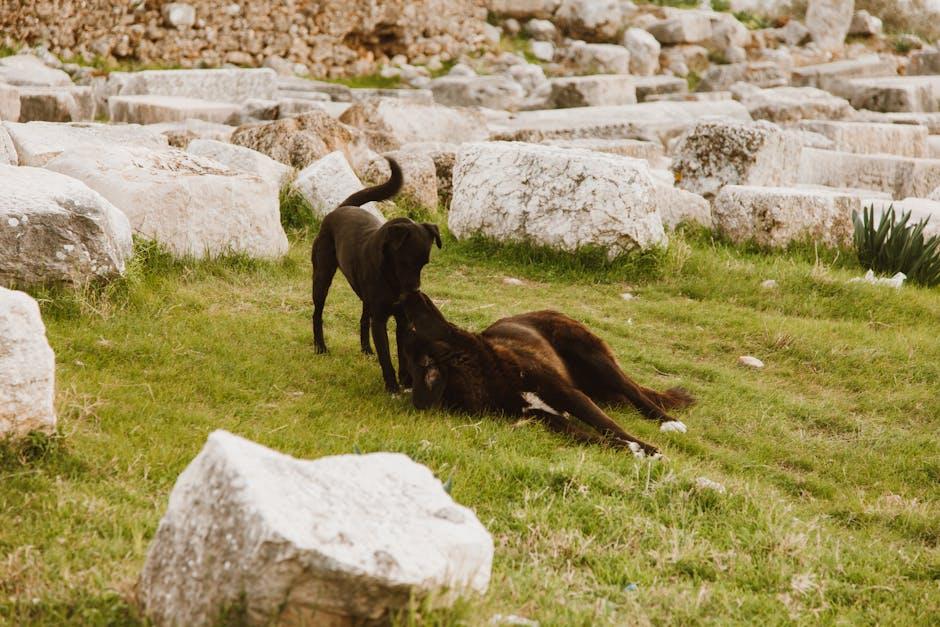Welcoming a new puppy into your home is an exciting and joyful experience, filled with wagging tails and playful antics. As you prepare for this delightful addition to your family, ensuring your yard is a safe haven for your furry friend is essential. Puppies are naturally curious and energetic, eager to explore every nook and cranny of their environment. While this enthusiasm is endearing, it also means that potential hazards could be lurking in your backyard. In this article, we’ll guide you through the best practices for puppy proofing your yard, transforming it into a secure playground where your puppy can frolic and grow. From identifying potential dangers to implementing effective safety measures, we’ll help you create a nurturing outdoor space that supports your puppy’s adventurous spirit while keeping them safe and sound.
Creating a Safe Haven: Identifying Potential Hazards for Your Puppy
Transforming your yard into a sanctuary for your puppy involves a keen eye for potential hazards. Begin by conducting a thorough inspection of your outdoor space. Fencing is crucial; ensure there are no gaps or weak spots that might tempt your curious pup to explore beyond the boundaries. Secure gates with locks to prevent any accidental escapes. Additionally, be mindful of plants within your yard. Some common garden flora can be toxic to dogs, such as:
- Lilies
- Azaleas
- Daffodils
- Foxglove
Remove or fence off these plants to keep your furry friend safe. Also, consider the ground surfaces; avoid sharp gravel or uneven stones that could harm tender paws. By addressing these potential dangers, you’re well on your way to creating a safe and joyful environment for your new puppy to explore and enjoy.

Designing a Puppy-Friendly Landscape: Tips for Choosing Plants and Materials
When designing a yard that is both beautiful and safe for your furry friend, selecting the right plants and materials is crucial. Begin by opting for non-toxic plants that are safe for puppies to chew on. Some excellent choices include:
- Lavender – Not only is it aromatic, but it’s also safe for dogs.
- Rosemary – This herb is non-toxic and adds a lovely fragrance.
- Marigolds – Bright and cheerful, these flowers are puppy-friendly.
Additionally, the materials you use can make a significant difference. Choose soft surfaces like grass or clover for play areas to cushion those playful tumbles. For pathways, consider mulch or pea gravel, as these are gentle on little paws and provide excellent drainage. Avoid sharp-edged stones and steer clear of cocoa mulch, which is harmful to dogs. By selecting the right plants and materials, you create a safe haven for your puppy to explore and enjoy.

Securing Boundaries: Effective Fencing Solutions to Keep Your Puppy Safe
Ensuring your furry friend’s safety starts with choosing the right fencing solutions. Puppies are naturally curious, and their adventurous spirit often leads them to explore every nook and cranny of your yard. To prevent any unexpected escapes, it’s crucial to opt for fences that are both durable and escape-proof. Consider installing fences with vertical slats rather than horizontal ones, as these are more challenging for puppies to climb. Solid wood or vinyl fences offer excellent visibility obstruction, which can help reduce barking triggered by external stimuli. Moreover, the height of the fence should be at least 4 to 6 feet to ensure that even the most agile pups remain contained.
- Invisible Fencing: This is a popular choice for pet owners who prefer not to alter the aesthetics of their yard. It uses an underground wire and a special collar to keep your puppy within boundaries.
- Mesh Fencing: A cost-effective solution, mesh fencing can be installed quickly and is flexible enough to adapt to various yard shapes.
- Chain-Link Fencing: While not the most visually appealing, chain-link fences are sturdy and effective, especially when combined with a visual barrier to discourage climbing.
Beyond physical barriers, always inspect your yard for any potential escape routes or hazards, such as gaps under the fence or objects that could be used as stepping stones. Regular maintenance and vigilant monitoring are key to keeping your puppy safe and secure in their outdoor playground.

Interactive Spaces: Building Enrichment Areas to Stimulate Your Puppys Senses
Creating a sensory-rich environment for your puppy not only keeps them entertained but also aids in their development. Start by incorporating various textures in their play area. Think about laying down different surfaces like grass, sand, and even a patch of gravel. These varied textures help in sharpening their tactile senses and offer them new experiences under their paws.
Introduce elements that engage their sense of smell and hearing. Consider planting dog-safe herbs such as mint or lavender, which can provide delightful scents and even some health benefits. You can also hang wind chimes or place water features that create soothing sounds, helping to keep your puppy calm and curious. For a bit of fun, add a few interactive toys that squeak or rattle to keep them intrigued. set up visual stimuli like brightly colored toys or flags that move with the breeze to capture their attention and encourage active play.

